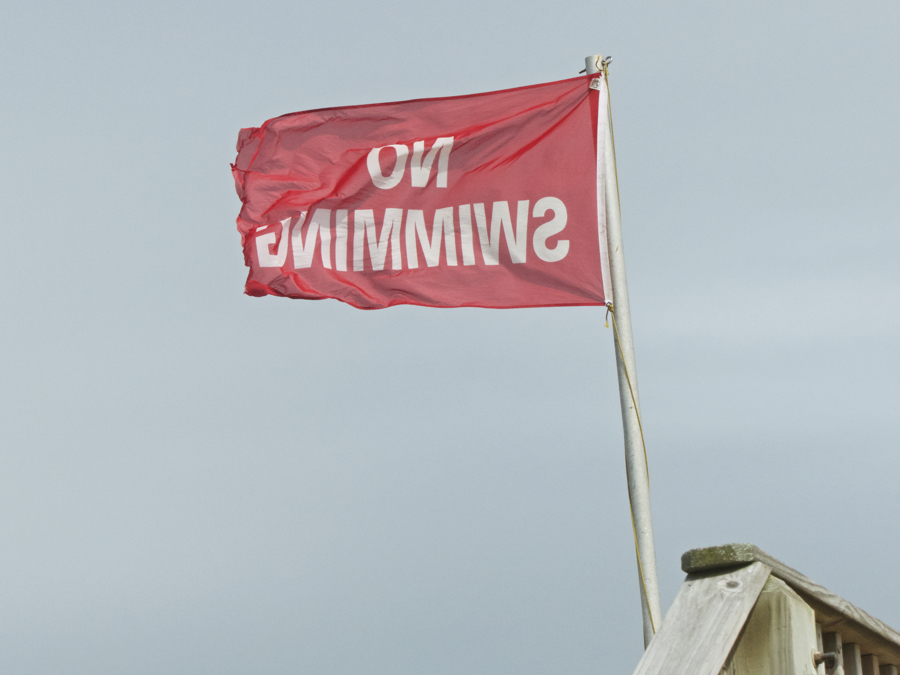 When the red caution flags are flying, please don't swim in the ocean.
When the red caution flags are flying, please don't swim in the ocean.For very good reasons the Outer Banks is one of the most popular places for families to visit. Fantastic summer weather, great beaches and the ocean is usually a great place to go swimming.
But usually is not always, and there are some days when going in the ocean is dangerous. We call them red flag days because there is always a red flag with no swimming printed on it in bold letter when it's not safe to go in the water.
The red flags are almost always raised because of the threat of rip currents. Sometimes the surf is so angry that the red flags will go up, but especially in the summer, it's rip currents.
What is a Rip Current
A rip current is a channel of water that is flowing out to sea.
What causes a rip current are the natural fluctuations in the seabed.Waves break on sandbars. The sandbar does not have to be particularly high to cause a wave to break, but it does have to be higher than the seabed directly seaward of it. If there is a gap between the sandbars, there will be nothing to cause the waves to break there and as the water flows out, it will naturally flow to that channel.
Because there is no inflowing waves to disrupt the water that is being channeled out to sea, the outgoing water can gain considerable force—far more force that even the strongest swimmer can overcome.
Visually, rip currents tend to be somewhat deceptive. Because there are no waves in the area of the rip current, it often appears as the calmest stretch of water around. It is not!
Safety Tips
A couple of important things to know about rip currents—safety tips that we hope will never be necessary:
- Rip currents do not drown swimmers. People drown because they panic and try to swim into the current exhausting themselves.
- Do not panic. Swim either parallel to the shore or with the current. When the rip current dissipates, swim into shore.
- Rip currents are nearshore events. They only exist in the surf zone. No breaking waves, no rip current.
There are some safety tips that we would like to pass along.:
- Do not go in the ocean if the red flags are flying. In the summer, the red flags are almost always warn of riptides. The National Weather Service has gotten quite good at predicting them, so if the flags are flying please do not go in the water.
- Swim by a lifeguard.
- Go to the beach with someone or in a group.
Red flag days are fairly rare during the summer. Occasionally if a storm is passing offshore, there will be two or three days in a row, but for the most part it's one day and then the flags come down. Take that day to go shopping or take in some Outer Banks history.
Here at Joe Lamb Jr., & Associates. we want your visit with us to be everting you hoped it would be. A little bit of caution will go a long way to making sure you and your family have a great time on the Outer Banks.







